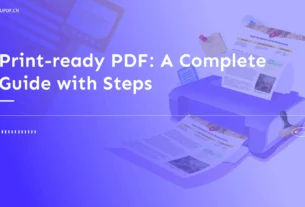A key part of HR tasks, performance management is an essential part of employee evaluations. This also affects engagement, productivity, and retention.
With a proper performance management system in place, companies ensure 51% lower turnovers when compared to others. Further, they also enjoy an 18% increase in productivity.
On the other hand, a poor performance management system can lead to disengaged employees and poor productivity, and finally “silent quitting”.
Reevaluating Performance Management for the Evolving Workforce
An estimate states that Gen Z workers are about to make up 27% of the workforce in 2025. To add, there has been a rise in the number of remote and hybrid workers. In the UK, 28% had a hybrid arrangement while another 41% worked remotely.
This calls for performance management systems that are designed to handle the demands of the modern workforce. Further, this change in the workforce brings to light the drawbacks that our usual performance management systems have.
Issues Plaguing Performance Management
A surprising 2024 report stated that as few as 10% of workers felt engaged in their work in the UK. Further, in 2023, companies in the UK lost an annual amount of £257 billion due to loss of employee engagement. The prime reason behind this is the performance management system in use.
Below are the most common problems that employees face vis-a-vis performance management systems:
-
Lack of Clarity in Goal Setting
Often it happens that performance targets are assigned but there is no clarity on the scope of work. This leaves a worker in the dark, unable to navigate between tasks based on their priority. In turn, the employee may fall short of meeting performance targets.
-
Undefined Work Processes
An ambiguity in approach can lead to the same task being done differently by every worker. This can lead to issues during performance reviews and appraisals. Further, this also becomes an issue when setting a benchmark for the given task.
-
No Space for Employee Opinion
With a lack of an employee feedback system, the employees are unable to present their views on the performance management system and the other work processes. This leads to a rise in disengagement and a loss in productivity.
-
Inaccurate Tools and Metrics
A qualitative approach over quantitative and no set metrics results in abstract evaluations during appraisals. Further, employers have little to no insight into how well the worker has during the set period. To add, the tools in use may not suit the work process or contain parameters for an accurate evaluation.
-
Bias in the Evaluation Process
The two main indicators for appraisals are observation (67%) and ratings (54%), as per Gallup. However, both are subjective.
Though appraisals are not a popularity contest, they are also not immune to human bias. Often when reviews that are not based on data suffer from biased opinions, leading to inaccurate feedback. Further, a poor biased review can lead to disengagement from work.
-
Little to no Recognition for Achievements
Recognition in corporate structures comes in the form of incentives, bonuses, and promotions. If the employees feel unacknowledged for their achievements, they find no reason to improve. This lack of motivation, ten hampers productivity.
-
Poor Inter-Level Communication
With the change in occupation type from full-time to remote and hybrid can lead to workers being unable to communicate with their managers. Further, this can also lead to employees being left behind. To add, a communication breakdown will lead to a loss of efficiency which, in turn, will affect work quality and profits.
Addressing the Issues in Performance Management Systems
To meet the needs of the evolving workforce, having a proper performance management system is essential. This should aim at delivering the below:
-
Set Well-Defined Tasks
Goals set using the HR appraisal system should be clear and measurable. Further, the indicators that act as milestones need to be supported by some data. By opting for this route, workers are clear on what they need to achieve to meet their targets. To add, these goals need to be relevant, achievable, and time-bound.
-
Take up a Continuous Performance Management System
By offering regular feedback to workers, Managers and Team Leaders can offer guidance. This will also facilitate communication, thus allowing the workers to flag any issues and doubts.
-
Incorporate Employee Opinion
In addition to accounting for the Managers, the appraisal process should include inputs from the peers to get a better view of the employee’s performance. Further, when employees can give feedback, they feel heard. This acts as a driver of employee engagement, which can further increase profits by 23%.
-
Design Reskilling and Training Sessions
Use the performance management system to identify skill gaps among your workers. In turn, this is useful when coming up with training programs.
-
Offer Incentives for Reaching Targets
The Incentive Research Foundation states that proper incentives can act as a motivating factor, improving performance by 22%. This speaks volumes about the effect of incentives. Thus, employers need to have a system in place that recognises the efforts of their workers.
-
Take a Data-Driven Quantitative Approach
By using measurable targets, employers can define the targets they set for their employees. Further, performance indicators (KPIs) that are tailored to their job profile can help measure how well they perform.
-
Use Technology (Performance Management System Software)
As per Gallup, barely 22% believe that the Performance Management System their workplace has is fair. By going for a Performance Management System Software, you can reduce the impact of human bias.
To Conclude: Addressing Change with Performance Management System Software
Increasing productivity and retention is the goal for all HRMs. An effective way to address this is via performance management systems.
Further, going for a Performance Management System Software will create a streamlined, bias-free system that benefits both employees and employers. Pick a Performance Management System Software that suits your needs and the changes in the workforce.




